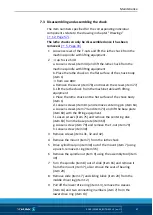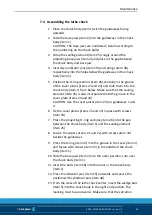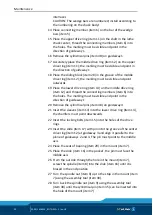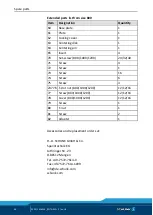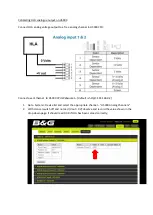
Declaration of Incorporation
02.00|1416054_ROTA-M2 + 2 |en-US
59
Declaration of Incorporation
in accordance with Directive 2006/42/EC, Annex II, Part 1.B of the European Parliament
and of the Council on machinery.
Manufacturer/
distributor
H.-D. SCHUNK GmbH & Co. Spanntechnik KG
Lothringer Str. 23
D-88512 Mengen
We hereby declare that on the date of the declaration the following partly completed
machinery complied with all
basic safety and health regulations found in Directive 2006/42/EC of the
European Parliament and of the Council on Machinery
. The declaration is rendered invalid if modifications are made to the product.
Product designation:
Product description: manually operated, centrically
compensating 4-jaw lathe chuck
ID no.
ROTA-M flex 2+2
ID numbers:
1410479, 1410477, 1407685, 1407684, 1400911, 1400910,
1389671, 1389670, 1446775, 1446776, 1446777
The partly completed machinery may not be put into operation until it has been
confirmed that the machine into which the partly completed machinery is to be installed
complies with the provisions of the Machinery Directive (2006/42/EC).
Applied harmonized standards, especially:
DIN EN ISO
12100:2011-03
Safety of machinery - General principles for design -
Risk assessment and risk reduction
DIN EN 1550:2008-11 Machine-tools safety - Safety requirements for the design and
construction of work holding chucks
Other related technical standards and specifications:
DIN ISO 702-4:2010-04 Machine tools - Connecting dimensions of spindle noses and work
holding chucks - Part 4: cylindrical assembly
VDI 3106:2004-04
Determination of permissible speed (rpm) of lathe chucks (jaw
chucks)
The manufacturer agrees to forward on demand the relevant technical documentation for
the partly completed machinery in electronic form to national authorities.
The relevant technical documentation according to Annex VII, Part B, belonging to the
incomplete machine, has been created.
Person authorized to compile the technical documentation:
Philipp SchräderAddress: refer to manufacturer's address
Mengen, September 2020
p.p. Philipp Schräder; Head of Development
13



